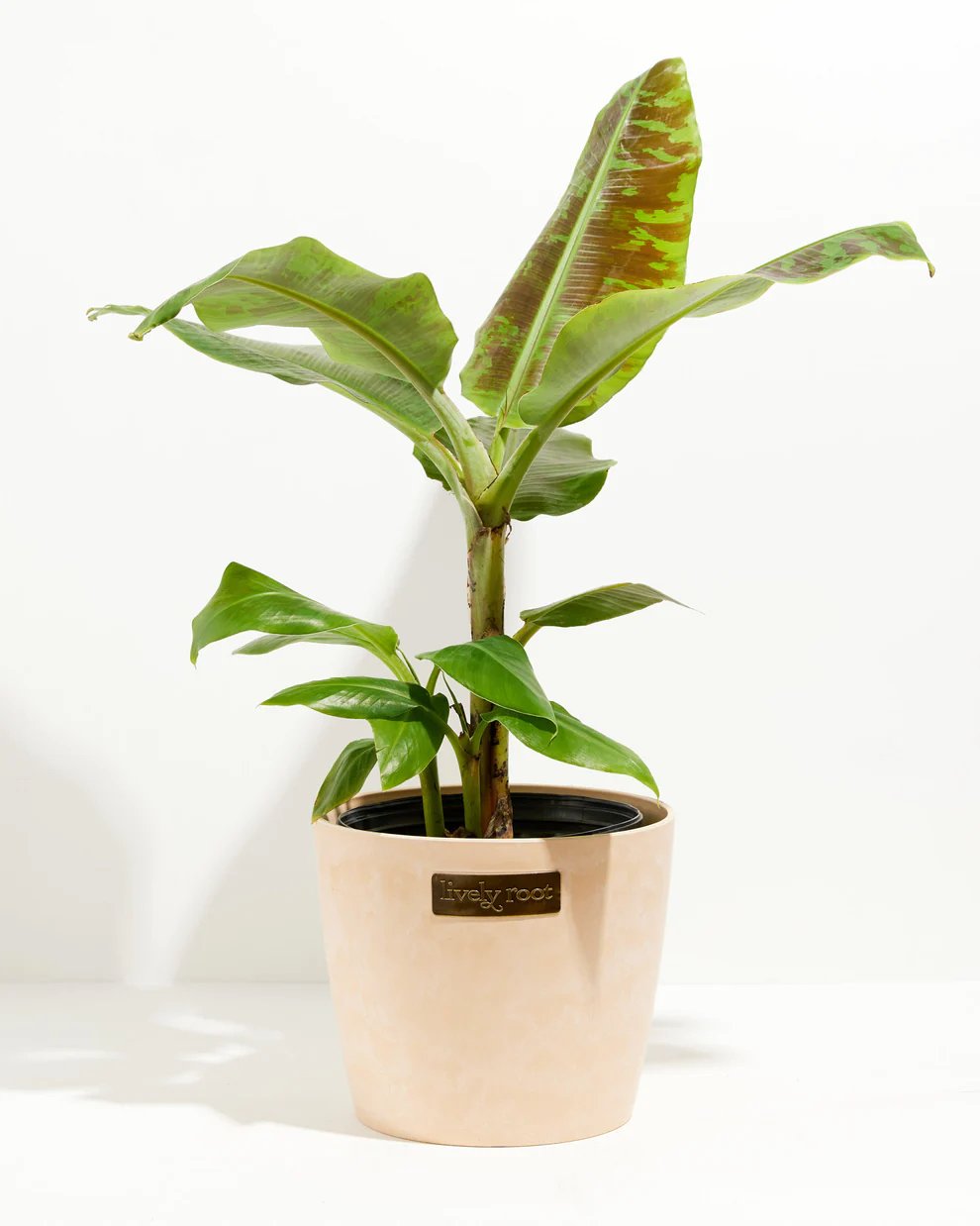Plants have become a staple in modern interior design, bringing a touch of nature and warmth to any space. They not only add aesthetic value but also have health benefits, such as improving air quality and reducing stress levels. However, not all plants are created equal when it comes to interior design. Mature, established plants have a unique charm and character that off-the-shelf plants cannot match.
Mature plants, particularly those that have been passed down through generations or have a personal history, bring context and personality to a space. Inherited plants can be a sentimental reminder of loved ones, while acquired plants can be a conversation starter or a way to showcase one's love for gardening. These plants have grown to their proper size and proportion, and their presence adds a touch of sophistication and maturity to a room.
Musa Dwarf Cavendish Banana Tree from Lively Root
For those who may not have access to mature plants, designers suggest creating the illusion of a larger, more established plant by combining several smaller ones in a large pot. This trick not only adds volume to a space but also creates a lush and luxuriant look.
When choosing a plant pot, it is important to consider the size and proportion of the plant, as well as the style of the room. The pot should be in proportion to the visible plant above the soil level and coordinate with the dominant style of the room. Additionally, the pot should be about ¾ inch bigger than the diameter of the inner pot to allow for air circulation.
It is also worth investing in plants that can be propagated through cuttings, as this not only spreads the cost over multiple plants but also increases the variety of species in one's collection. Moreover, propagating plants can be a fun and rewarding hobby.
When renovating a space, it is recommended to move plants out temporarily to avoid damage from chemicals or strong smells. While health and safety regulations for indoor paints and floor treatments are now stricter, it is still better to be safe than sorry when it comes to the health of plants.
Zen Pet Friendly Collection from Lively Root
In conclusion, incorporating plants into interior design is a great way to create a warm and inviting atmosphere in any space. Mature plants add character and personality, while smaller plants can be combined to create a lush and established look. When choosing pots, size, proportion, and style are important factors to consider. Propagating plants is also a great way to increase variety and spread costs. With a little bit of planning and care, plants can transform any space into a green and vibrant oasis.





